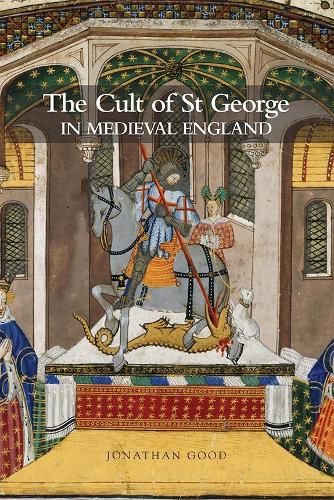Readings Newsletter
Become a Readings Member to make your shopping experience even easier.
Sign in or sign up for free!
You’re not far away from qualifying for FREE standard shipping within Australia
You’ve qualified for FREE standard shipping within Australia
The cart is loading…






Recently, St George has enjoyed a modest revival as a specifically English national symbol. But how he became the patron saint of England in the first place has always been a mystery. He was not English, nor was his principal shrine there - the usual criteria for national patronage; yet his status and fame have eclipsed all others. Instead, it was Edward III’s use of the saint in his wars against the French that really established him as a patron and protector of the king. Unlike other such saints, however, George was enthusiastically adopted by other English people to signify their membership in the community of the realm . This book traces the origins and growth of his cult, arguing that, especially after Edward’s death, George came to represent a good politics (in this case, the shared prosecution of a war with spoils for everyone) and could be used to rebuke subsequent kings for their poor governance. Most kings came to realize this fact, and venerated St George in order to prove their worthiness to hold their office. This political dimension of the cult never completely displaced the devotional one, but it was so strong that St George survived the Reformation as a national symbol - one that grows ever more important in the wake of devolution and the recovery of a specifically English identity.
JONATHAN GOOD is Associate Professor of Historyat Reinhardt University, Georgia.
$9.00 standard shipping within Australia
FREE standard shipping within Australia for orders over $100.00
Express & International shipping calculated at checkout
Recently, St George has enjoyed a modest revival as a specifically English national symbol. But how he became the patron saint of England in the first place has always been a mystery. He was not English, nor was his principal shrine there - the usual criteria for national patronage; yet his status and fame have eclipsed all others. Instead, it was Edward III’s use of the saint in his wars against the French that really established him as a patron and protector of the king. Unlike other such saints, however, George was enthusiastically adopted by other English people to signify their membership in the community of the realm . This book traces the origins and growth of his cult, arguing that, especially after Edward’s death, George came to represent a good politics (in this case, the shared prosecution of a war with spoils for everyone) and could be used to rebuke subsequent kings for their poor governance. Most kings came to realize this fact, and venerated St George in order to prove their worthiness to hold their office. This political dimension of the cult never completely displaced the devotional one, but it was so strong that St George survived the Reformation as a national symbol - one that grows ever more important in the wake of devolution and the recovery of a specifically English identity.
JONATHAN GOOD is Associate Professor of Historyat Reinhardt University, Georgia.